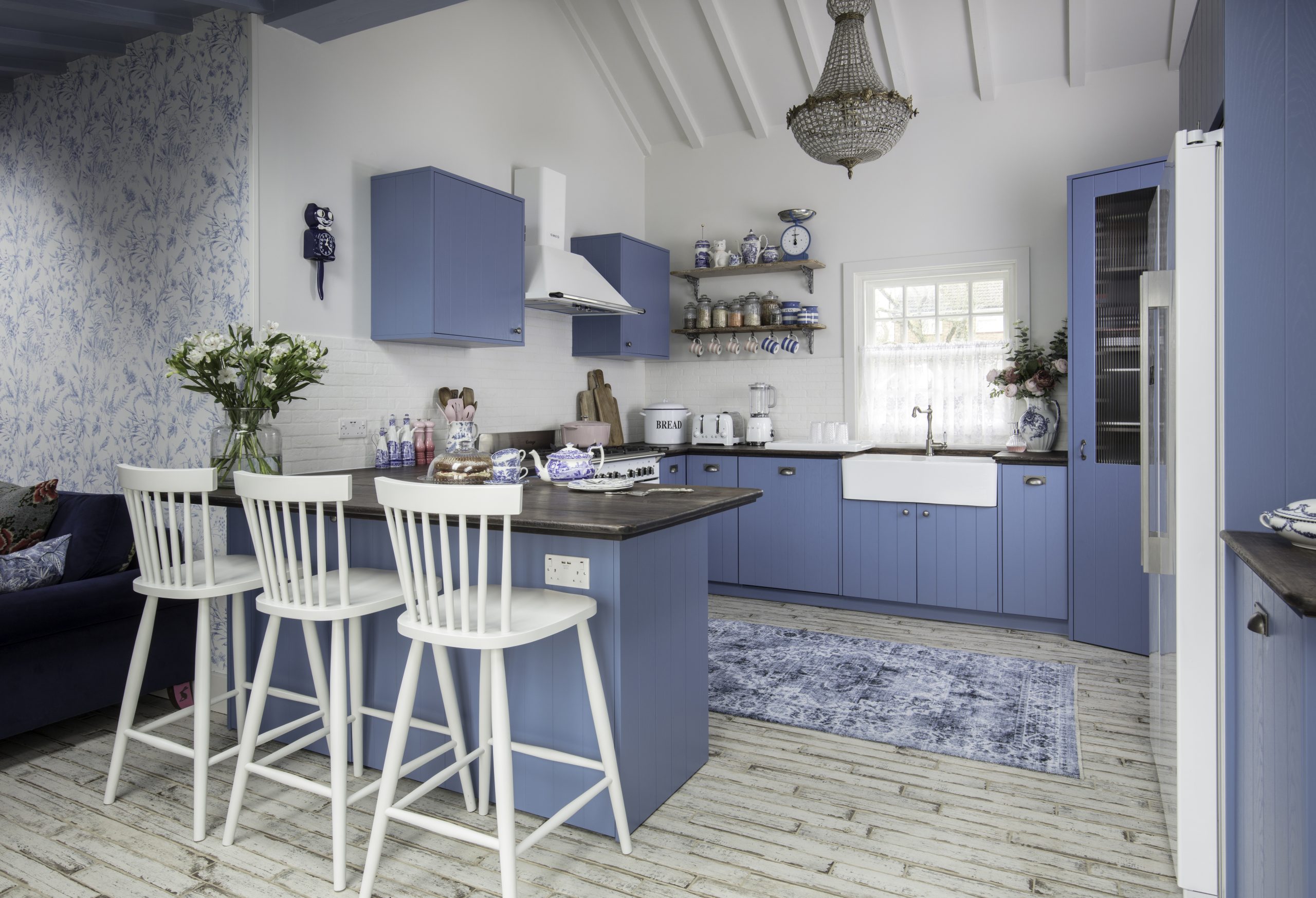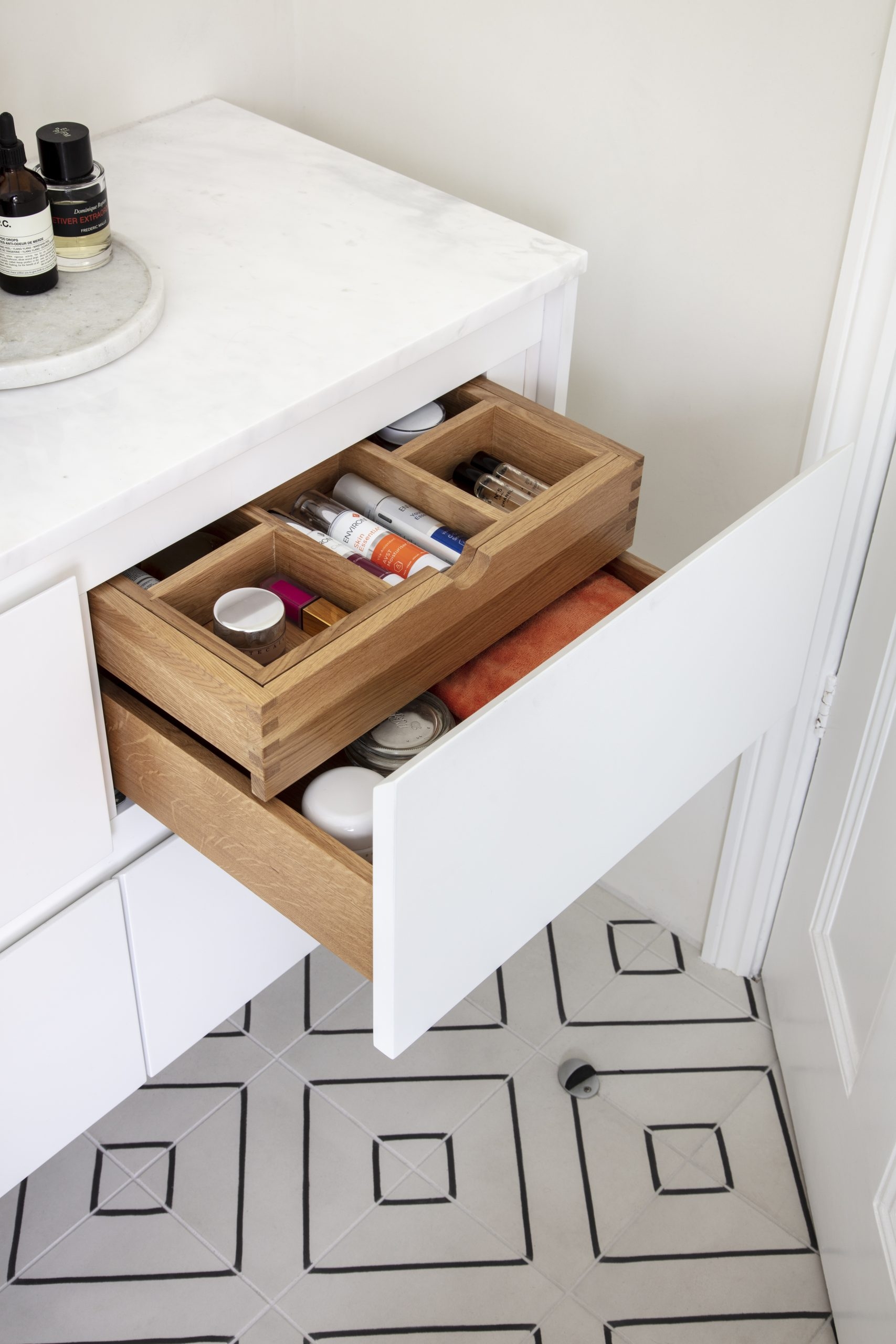6 Ways to use textures and materials in your kitchen design
Texture: the illustrious element that takes a kitchen and makes it high-class. Whether you’re drawn to clean modern lines or rich, characterful finishes, texture makes your kitchen feel layered, inviting, and truly bespoke.
In this blog, we explore how to use texture in your kitchen to enhance both form and function. Covering everything from wall coverings to worktops, cabinet finishes to flooring.
Why Texture Matters in Kitchen Design
Texture gives your kitchen depth. A room filled with smooth, flat surfaces can feel… Underwhelming. And flat. The right balance of materials adds richness, dimension, and depth. Think of it like this: texture is what makes a minimalist space feel warm instead of cold, and a maximalist space feel curated rather than chaotic.
Before choosing finishes, ask yourself: What do I want the space to feel like? Cozy? Sleek? Timeless? Texture helps define that emotional tone. And it’s one of the most effective ways to elevate a luxury kitchen design.
1. Mix Materials to Add Depth
Use contrast to create balance. Pairing matt cabinetry with polished marble countertops or combining wood-grain flooring with sleek metal hardware brings out the best in each element. This type of intentional layering is one of the most effective ways to mix textures in a modern kitchen without overwhelming the space.
At Amberth, we use moodboards as a part of the initial phase of conceptualisation to capture the style of your kitchen. We test combinations, layering swatches of wood, tile, fabric and abstract items to find the right balance for each client.
If you’re looking for a quick, simple way to explore textures at home, moodboard tools like Morpholio and SampleBoard let you play with ideas and combinations.
2. Textured Tiles That Tell a Story
Tiles aren’t just functional. They’re a design moment. Choosing the best textured tiles for kitchen splashbacks can completely change the feel of a space. Whether it’s a raked porcelain surface or a marble with subtle veining, textured tiles soften and elevate sleek cabinetry.
Brands like Domus Tiles offer porcelain and marble options with finishes that feel as good as they look. These tactile choices bring a handcrafted, luxurious quality to everyday surfaces.
 Ideal Home Blog: Panelling Ideas
Ideal Home Blog: Panelling Ideas
3. Decorative Wall Panels & Mouldings
Want to make a statement without using colour? Consider wall panelling or decorative mouldings. Some of the most impactful wall panelling ideas for kitchens include fluted panels, cornicing, and bespoke joinery to frame cabinetry and add definition.
Companies like Orac Décor offer architectural wall elements that can be painted to match or contrast your palette, bringing a quiet sense of luxury and structure to any kitchen.
 Tom Howley Blog: Using Texture In The Kitchen
Tom Howley Blog: Using Texture In The Kitchen
4. Softness Through Fabric & Upholstery
Yes, even in kitchens. Incorporating fabric texture in kitchen design through bar stools, window treatments, or nearby dining nooks adds a layer of warmth and softness.
A boucle seat, a linen curtain, or a subtly patterned Roman blind can soften harder materials like stone or glass. Colefax & Fowler is a favourite for timeless, high-quality fabrics that create comfort without overpowering the space.

5. Cabinet Finishes That Feel Right
Choosing the best cabinet finish for a luxury kitchen comes down to more than just aesthetics; it’s about how the material lives over time. Gloss offers a reflective surface and a clean, contemporary feel, while matt and wood textures create softness and depth. Fingerprint-resistant matt lacquers are especially popular with families.
We guide clients through samples and live projects so they can see (and touch) the difference in person.

Amberth, Blue kitchen
6. Personalising Texture to Reflect You
Gone are the days when interior design is simply about following trends. Quality design is about building a space that feels personal. Whether it’s a brushed brass detail, a veined quartz counter, or a fluted timber island, these textural touches allow you to express your aesthetic in a way that’s tactile, subtle, and enduring.
By carefully selecting materials and layering textures, we help you create a kitchen that reflects your taste, lifestyle, and values.
Texture as a Design Tool
When used with intent, texture is one of the most powerful design tools. It helps define your style, adds interest to neutral palettes, and improves how a space feels to live in. At Amberth, we bring in texture at every level – from layout to final styling – so your kitchen is not only beautiful, but beautifully lived in.
FAQs
How many different textures should I use in one kitchen?
We recommend aiming for three to four key textures that contrast and complement each other. Too many can feel chaotic, while too few can feel flat. A balanced mix—like matt lacquer, wood grain, soft fabric, and metal—is often just right.
Does adding texture make a space harder to clean?
Not necessarily. Some tactile surfaces, like brushed metal or satin-finish lacquers, are surprisingly low-maintenance. We always help you choose materials that look beautiful and live well.
Can I combine natural and engineered materials in one kitchen?
Absolutely. In fact, pairing natural materials like oak or marble with engineered surfaces like quartz or Fenix can give you the best of both: durability and visual warmth.
What are the best textures for a small kitchen?
For smaller spaces, lighter wood grains, matt finishes, and subtle veining help add depth without overwhelming the room. Reflective elements can help bounce light, but balance is key.
Will textured elements go out of style?
Texture tends to transcend trends when chosen thoughtfully. Avoid overly patterned or novelty finishes, and focus on tactile, timeless materials that age well, like stone, metal, timber, and linen.
Can I update my kitchen’s texture without a full renovation?
Yes! Swapping out handles, re-facing cabinetry, adding a fluted panel to an island, or updating a splashback can introduce texture without redoing everything.


